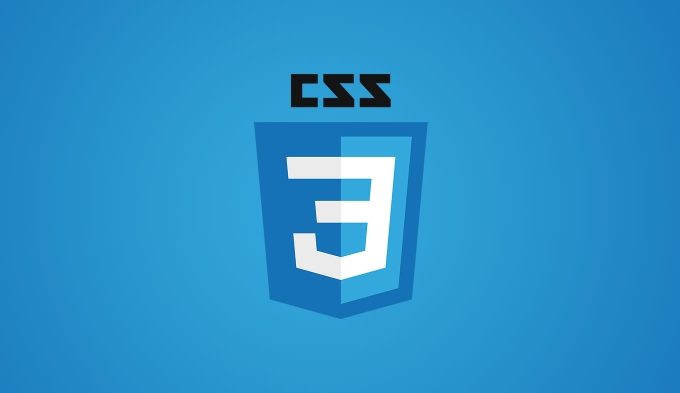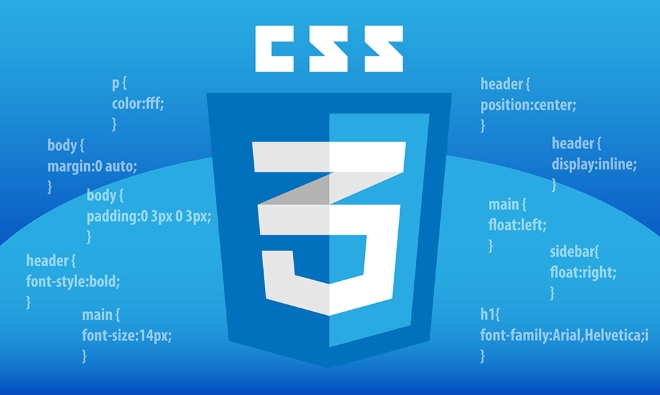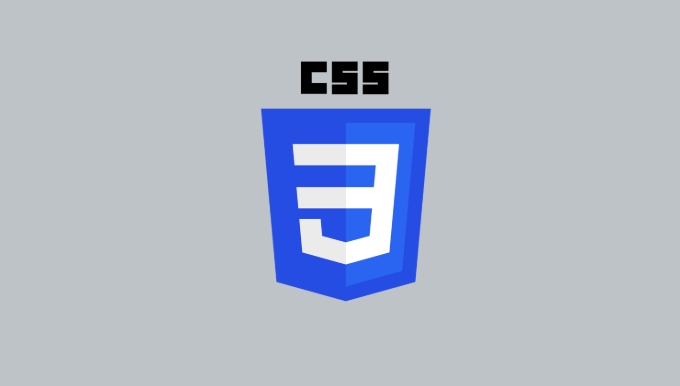CSS Logical Properties and Values provides a writing mode-based layout method, using inline, block, start, end and other logical directions to replace the traditional left, right, top, and bottom. 1. It enables the style to automatically adapt to LTR, RTL and vertical layout without additional adjustments; 2. Common properties include margin-inline-start, padding-block-end, inline-size and block-size; 3. Applicable to international websites, component library development and responsive design; 4. Be careful about compatibility when using it, and some browsers may need fallback processing.

CSS Logical Properties and Values is a CSS feature that defines layout and style based on writing mode. Instead of using left, right, top, bottom like traditional physical properties, they use more abstract logical directions, such as inline, block, start, and end to describe the position and dimensions of elements.

The advantage of this is that whether your content is left to right (LTR), right to left (RTL), or vertical arrangement (such as Chinese vertical text or Japanese layout), the style can be adapted automatically without additional adjustments.
Why are logical attributes needed?
In traditional CSS, we are accustomed to using physical direction properties such as margin-left and padding-right. However, when faced with different text directions or page layouts, these attributes appear to be inflexible enough. For example:

- In RTL mode, the meanings of left and right are reversed.
- In vertical layout, top and bottom may no longer be "up and down", but "front and back".
Logical attributes introduce the concepts of inline (inline direction) and block (block level direction) to make the layout more in line with the writing logic of the content.
For example:

-
margin-inline-startindicates the margin on the side where the content starts in the inline direction.- LTR is equivalent to
margin-left - RTL is equivalent to
margin-right - Under vertical layout, it may correspond to the top
- LTR is equivalent to
What are the common logical properties?
Here are some commonly used logical properties and values, as well as their corresponding physical properties (depending on writing-mode and direction):
-
Box model related
-
margin-inline,margin-block -
padding-inline,padding-block -
border-inline-start,border-block-end
-
-
Dimension control
-
inline-size: Controls the size of the inside direction (replaces width) -
block-size: Controls the size of the block-level direction (replaces height)
-
-
Alignment
-
text-align: start | end: more general than left/right -
justify-content: flex-start | flex-endalso gradually supports logical values such asflex-inline-start(some browsers have already supported it)
-
Actual usage scenarios and suggestions
-
International website or multilingual project
- If you are developing a website that supports RTL or Chinese, Japanese and Korean vertical text, logical properties can reduce a lot of redundant style coverage code.
-
Component library development
- Components should be as free as possible to rely on specific writing directions. Using logical properties can make components more adaptable.
-
Dynamic direction switching in responsive design
- The page may dynamically switch direction according to the user's settings (such as switching LTR/RTL through buttons), and the logical properties can automatically adapt to this change.
?? Pay attention to compatibility: Currently, mainstream browsers have supported most logical properties, but if you still need to be compatible with old browsers (such as IE), you may need to use fallback writing or use PostCSS plug-in for downgrade processing.
Tips: How to quickly determine which logical attribute should be used?
- Want to express "left" or "right"? Change to
*-inline-startor*-inline-end - Want to express "top" or "bottom"? Change to
*-block-startor*-block-end - Want to express width or height? Switch to
inline-sizeorblock-size
Basically that's it. Logical attributes are not necessary, but they are very practical in multilingual or multi-typed scenarios, and are worth understanding and trying in advance.
The above is the detailed content of What are CSS Logical Properties and Values?. For more information, please follow other related articles on the PHP Chinese website!

Hot AI Tools

Undress AI Tool
Undress images for free

Undresser.AI Undress
AI-powered app for creating realistic nude photos

AI Clothes Remover
Online AI tool for removing clothes from photos.

Clothoff.io
AI clothes remover

Video Face Swap
Swap faces in any video effortlessly with our completely free AI face swap tool!

Hot Article

Hot Tools

Notepad++7.3.1
Easy-to-use and free code editor

SublimeText3 Chinese version
Chinese version, very easy to use

Zend Studio 13.0.1
Powerful PHP integrated development environment

Dreamweaver CS6
Visual web development tools

SublimeText3 Mac version
God-level code editing software (SublimeText3)
 How to use PHP to build social sharing functions PHP sharing interface integration practice
Jul 25, 2025 pm 08:51 PM
How to use PHP to build social sharing functions PHP sharing interface integration practice
Jul 25, 2025 pm 08:51 PM
The core method of building social sharing functions in PHP is to dynamically generate sharing links that meet the requirements of each platform. 1. First get the current page or specified URL and article information; 2. Use urlencode to encode the parameters; 3. Splice and generate sharing links according to the protocols of each platform; 4. Display links on the front end for users to click and share; 5. Dynamically generate OG tags on the page to optimize sharing content display; 6. Be sure to escape user input to prevent XSS attacks. This method does not require complex authentication, has low maintenance costs, and is suitable for most content sharing needs.
 PHP creates a blog comment system to monetize PHP comment review and anti-brush strategy
Jul 25, 2025 pm 08:27 PM
PHP creates a blog comment system to monetize PHP comment review and anti-brush strategy
Jul 25, 2025 pm 08:27 PM
1. Maximizing the commercial value of the comment system requires combining native advertising precise delivery, user paid value-added services (such as uploading pictures, top-up comments), influence incentive mechanism based on comment quality, and compliance anonymous data insight monetization; 2. The audit strategy should adopt a combination of pre-audit dynamic keyword filtering and user reporting mechanisms, supplemented by comment quality rating to achieve content hierarchical exposure; 3. Anti-brushing requires the construction of multi-layer defense: reCAPTCHAv3 sensorless verification, Honeypot honeypot field recognition robot, IP and timestamp frequency limit prevents watering, and content pattern recognition marks suspicious comments, and continuously iterate to deal with attacks.
 What are common CSS browser inconsistencies?
Jul 26, 2025 am 07:04 AM
What are common CSS browser inconsistencies?
Jul 26, 2025 am 07:04 AM
Different browsers have differences in CSS parsing, resulting in inconsistent display effects, mainly including the default style difference, box model calculation method, Flexbox and Grid layout support level, and inconsistent behavior of certain CSS attributes. 1. The default style processing is inconsistent. The solution is to use CSSReset or Normalize.css to unify the initial style; 2. The box model calculation method of the old version of IE is different. It is recommended to use box-sizing:border-box in a unified manner; 3. Flexbox and Grid perform differently in edge cases or in old versions. More tests and use Autoprefixer; 4. Some CSS attribute behaviors are inconsistent. CanIuse must be consulted and downgraded.
 How to build a PHP Nginx environment with MacOS to configure the combination of Nginx and PHP services
Jul 25, 2025 pm 08:24 PM
How to build a PHP Nginx environment with MacOS to configure the combination of Nginx and PHP services
Jul 25, 2025 pm 08:24 PM
The core role of Homebrew in the construction of Mac environment is to simplify software installation and management. 1. Homebrew automatically handles dependencies and encapsulates complex compilation and installation processes into simple commands; 2. Provides a unified software package ecosystem to ensure the standardization of software installation location and configuration; 3. Integrates service management functions, and can easily start and stop services through brewservices; 4. Convenient software upgrade and maintenance, and improves system security and functionality.
 Describe the `vertical-align` property and its typical use cases
Jul 26, 2025 am 07:35 AM
Describe the `vertical-align` property and its typical use cases
Jul 26, 2025 am 07:35 AM
Thevertical-alignpropertyinCSSalignsinlineortable-cellelementsvertically.1.Itadjustselementslikeimagesorforminputswithintextlinesusingvalueslikebaseline,middle,super,andsub.2.Intablecells,itcontrolscontentalignmentwithtop,middle,orbottomvalues,oftenu
 What is the accent-color property?
Jul 26, 2025 am 09:25 AM
What is the accent-color property?
Jul 26, 2025 am 09:25 AM
accent-color is an attribute used in CSS to customize the highlight colors of form elements such as checkboxes, radio buttons and sliders; 1. It directly changes the default color of the selected state of the form control, such as changing the blue check mark of the checkbox to red; 2. Supported elements include input boxes of type="checkbox", type="radio" and type="range"; 3. Using accent-color can avoid complex custom styles and extra DOM structures, and maintain native accessibility; 4. It is generally supported by modern browsers, and old browsers need to be downgraded; 5. Set accent-col
 How to compile SCSS to CSS?
Jul 27, 2025 am 01:58 AM
How to compile SCSS to CSS?
Jul 27, 2025 am 01:58 AM
InstallDartSassvianpmafterinstallingNode.jsusingnpminstall-gsass.2.CompileSCSStoCSSusingthecommandsassinput.scssoutput.css.3.Usesass--watchinput.scssoutput.csstoauto-compileonsave.4.Watchentirefolderswithsass--watchscss:css.5.Usepartialswith_prefixfo
 How to change text color in CSS?
Jul 27, 2025 am 04:25 AM
How to change text color in CSS?
Jul 27, 2025 am 04:25 AM
To change the text color in CSS, you need to use the color attribute; 1. Use the color attribute to set the text foreground color, supporting color names (such as red), hexadecimal codes (such as #ff0000), RGB values (such as rgb(255,0,0)), HSL values (such as hsl(0,100%,50%)), and RGBA or HSLA with transparency (such as rgba(255,0,0,0.5)); 2. You can apply colors to any element containing text, such as h1 to h6 titles, paragraph p, link a (note the color settings of different states of a:link, a:visited, a:hover, a:active), buttons, div, span, etc.; 3. Most






